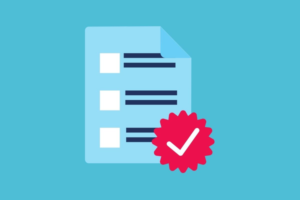Have you ever been in a situation where you just knew your communication wasn’t getting through? Or ever felt that your client or customer was not on the same wavelength? Or do you and a co-worker seem to be at constant odds over how to get the job done?
You’re most likely trying your best to connect with someone whose DISC communication style could be very different from yours. If you can identify peoples’ preferred DISC communication style, you are much more likely to have a better interaction with them. Communicating with different DISC styles is difficult unless you learn how to adapt your style to suit the person you are communicating with. How do you know how to convey your message? That is where the Extended DISC® model of communication comes in handy!
What is the DISC Communication Model?
The Extended DISC® Communication Model can help us identify the DISC personality types and recognise their communication preferences.
The DISC four-quadrant model forms the four Extended DISC® styles. Starting at the top right we have Dominance, the bottom right is Influence next is Steadiness, and then the top left is Compliance.

The vertical axis describes a “task vs people” orientation. Some individuals tend to focus on the tasks involved in a project, and others focus on the people involved. The words below these headings”thinking vs feeling” captures a person’s tendency to think their way through a decision or issue compared to others that feel their way through it by evaluating the emotions of others.
The horizontal axis describes the two opposites of “introvert vs extrovert“. This axis tends to apply to where people get their energy. For example, extroverts tend to gain energy outwardly from being around others. Introverts tend to be able to refuel their energy from within themselves.
Below these headings, we also need to consider the other words, “fast vs slow paced”. The ‘reserved’ oriented person tends to take a systematic and therefore slower approach to decisions, issues and attitude towards activities in general. The ‘fast-paced’ results people tend to look for shortcuts, take action fast and often view processes as slowing them down.
Learning the Extended DISC® Communication model and understanding the communication preferences of each type with help you communicate with different DISC styles effectively.
What are the DISC Communication Styles?
The DISC profile communication types differ significantly. They have preferred ways in which they are more comfortable when interacting with others.
D Personality Type Preferred DISC Communication Styles
D personality types tend to communicate in one direction. They say what they think and express their opinions as facts. D types tend to have short concentration spans and as a result, often interrupt if they are bored or frustrated with where the conversation is going. They are big picture thinkers, so they often talk about achievements, plans, or goals. D DISC profile communication styles may have trouble understanding others viewpoints, especially if they involve feelings without the backup of facts. They don’t tend to be interested in ‘why’ someone feels a certain way but prefer ‘what’ they have decided to do about it.
I Personality Type Preferred DISC Communication Styles
I personality types often get distracted easily by the environment. People interest them, so they are always watching others. They often stray from the topic at hand. You’ll regularly hear them tell people stories, especially about themselves. I DISC profile communication styles are very open and discuss their feelings. They are not shy to offer their opinions and feedback, but only if they know, it won’t cause conflict. They are very animated when they talk, especially when agreeing with you.
S Personality Type Preferred DISC Communication Styles
S personality types are easy-going and appear outwardly calm. They listen carefully and seem very engaged. S styles nod and seem to go along with things. Be careful of this as they may be saying they heard you not that they agree with the contents of what you are saying. S DISC personality communication styles are not easily excited or animated. They have strong opinions but often keep them quiet. S styles ask questions about specifics and tend to say “let me think about it” when they are asked to come to a decision.
C Personality Type Preferred DISC Communication Styles
C personality types appear reserved and reasonably quiet. They usually prefer to use written communication, such as emails. C types focus on details and want all the information to ensure they make correct decisions. They tend to ask a lot of questions and study the specifics. C profiles prefer communication where they can focus on facts and figures rather than opinions and feelings. C DISC personality communication styles may appear very critical and overly diplomatic.
Improve Communication & Teamwork with Extended DISC®
Download your FREE PDF Guide and See the Results Fast
Tips for Communicating with the DISC Styles
Tips when communicating with a D:
- Provide direct answers – act quickly
- Don’t ramble or waffle – limit socialising
- Don’t focus on problems and negatives
- Try not to repeat yourself
- Don’t use generalisations – have support
- Ask for their decisions
- Focus on bottom-line issues and results
Tips when communicating with an I:
- Maintain a positive atmosphere
- Help to achieve popularity/recognition
- Allow to express themselves
- Take time to chat, talk & socialise
- Be more expressive & enthusiastic
- Focus on the big picture
- Focus on the people aspects
Tips when communicating with an S:
- Proceed in a logical order
- Proceed at a slower pace
- Ask specific questions to find their true needs
- Provide enough time for them to reflect
- Provide support
- Ask for their opinions – keep quiet
- Provide precedents to reduce uncertainty
- Remember fairness and justice
- Give expectations of time to allow planning
Tips when communicating with a C:
- Discover the key issues and focus on them
- Answer questions calmly and carefully
- Be thorough, include all information
- Utilise supporting materials
- Slow down your presentation
- Listening carefully
Want to build stronger relationships?
Discover how adjusting your communication style to match DISC profiles can create more meaningful connections. Get started with DISC today!
Why modify your DISC profile to a person’s communication style?
Why do we have to change the way we interact to suit others? Well, it’s quite simple. We don’t have to at all. It’s up to us if we want to put the energy in to do it.
We already know that different people have different likes when it comes to movies, choice of cell phones, music and clothing, for example. It’s the same with communication. Some prefer short sentences. Some like to engage on more emotional levels and talk about stories. In comparison, others want the facts and proof about what you are saying and might need you to slow down for them to think about what you are saying.
In general, we communicate with people daily, and at times we don’t adjust our communication style to the situation or to the audience to which we are speaking. Being unaware and thinking that the way you interact will suit everyone because that’s the way you do it can lead to confusion, hurt feelings, misunderstandings or even conflict. Instead, learning how to adapt the way you communicate in different situations by considering the factors can influence the effectiveness of your communication and is a profound tool.
You might want to analyse these four easy steps when engaging in communication next time.
- Observe Others. When you meet someone, pay attention to traits such as what they talk about.
- Asses. Recall the DISC Communication Model and decide whether the person is more task or people orientated, or fast or slow-paced.
- Recognise. Based on your analysis above, you have the information to recognise the person’s DISC behavioural style.
- Adjust. Adjust your communication if necessary to engage in a pleasant interaction.




